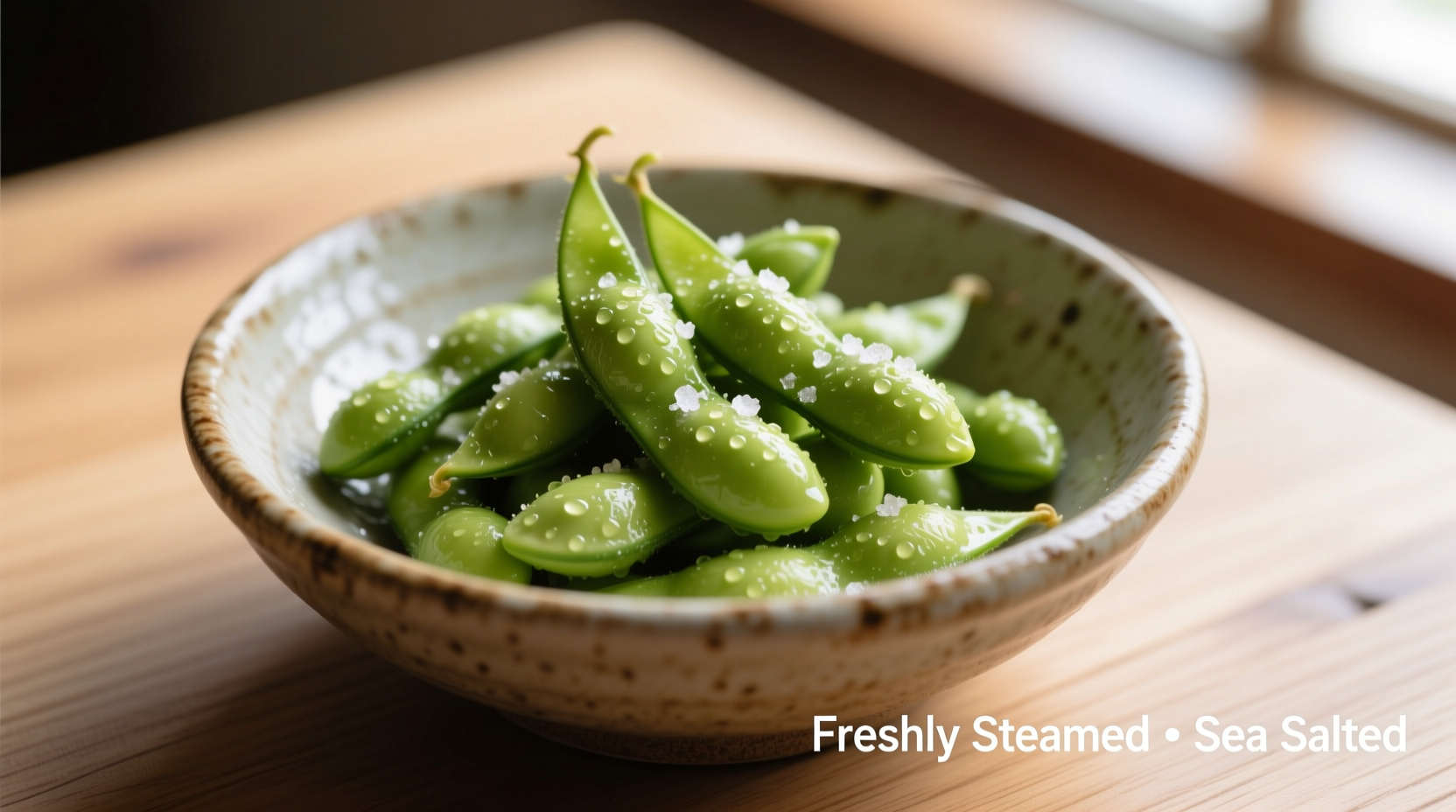Preparing frozen edamame couldn't be simpler, yet many home cooks make critical mistakes that lead to mushy beans or bland flavor. As someone who's taught thousands of home cooks professional vegetable preparation techniques, I've perfected a foolproof method that works every time. This approach delivers vibrant green beans with optimal texture in under 10 minutes with minimal equipment.
The Science Behind Perfect Edamame
Edamame's delicate texture requires precise cooking. According to the USDA FoodData Central, edamame contains heat-sensitive nutrients like vitamin C and folate that degrade with overcooking. The ideal preparation maintains the beans' natural crunch while eliminating potential food safety concerns from raw soybeans.
| Cooking Method | Time Required | Texture Result | Nutrient Retention |
|---|---|---|---|
| Boiling (Recommended) | 4-5 minutes | Firm yet tender | High (85-90%) |
| Steaming | 6-7 minutes | Slightly softer | Moderate (75-80%) |
| Thawing First | 8-10 minutes | Often mushy | Low (60-65%) |
Your Step-by-Step Cooking Process
Follow this professional chef-tested method for consistently perfect edamame:
What You'll Need
- Frozen edamame in pods (no need to thaw)
- Large pot with lid
- Colander
- 1 tablespoon kosher salt per quart of water
- Optional: 1 teaspoon baking soda (enhances green color)
Cooking Timeline: 5 Minutes to Perfection
- Boil water - Fill pot with enough water to cover edamame plus 2 inches, adding salt (and baking soda if using)
- Add frozen edamame directly - No thawing required; pour straight from freezer into boiling water
- Set timer immediately - Cook exactly 4-5 minutes for perfect texture (5 minutes for larger pods)
- Test for doneness - Remove one pod, cool slightly, and squeeze a bean; it should be tender but still slightly firm
- Shock in ice water - Drain immediately and plunge into ice bath for 1 minute to stop cooking
- Season and serve - Toss with flaky sea salt while still slightly damp

Flavor Variations Worth Trying
While traditional salted edamame satisfies most palates, these professional variations elevate your preparation:
- Garlic-Infused - Add 2 smashed garlic cloves to boiling water
- Spicy Miso - Toss cooked pods with 1 tsp white miso paste and chili flakes
- Lemon-Zest - Finish with fresh lemon zest and black pepper
- Umami Boost - Sprinkle with bonito flakes after cooking
Storage and Reheating Guidelines
Proper storage maintains edamame's quality for future enjoyment:
- Refrigerate cooked edamame in airtight container for up to 3 days
- Freeze for longer storage (up to 3 months) after blanching
- Reheat by briefly dipping in hot water (30 seconds) – never microwave
- Always discard any edamame with dark spots or off odors
Nutritional Benefits of Properly Cooked Edamame
When prepared correctly, edamame delivers impressive nutritional value per 1-cup serving:
- 18 grams of complete plant-based protein
- 8 grams of dietary fiber (32% of daily value)
- Rich in folate, vitamin K, and manganese
- Contains isoflavones with potential heart health benefits
Troubleshooting Common Problems
Address these frequent edamame preparation issues:
- Mushy beans – Overcooking is the culprit; reduce time by 30-60 seconds
- Bland flavor – Use more salt in cooking water (1.5 tbsp per quart)
- Difficulty removing beans – Squeeze pods from the stem end for easiest extraction
- Dull color – Add baking soda to cooking water or reduce cooking time
Frequently Asked Questions
Can I cook frozen edamame in the microwave?
Microwaving often creates uneven texture with some beans undercooked while others turn mushy. The boiling method delivers consistent results every time.
Do I need to remove pods before cooking?
No, always cook edamame in pods to protect the beans during cooking. Remove pods just before eating by squeezing the stem end.
How much salt should I use for cooking edamame?
Use 1 tablespoon kosher salt per quart of water—this creates a brine-like solution that properly seasons the beans throughout.
Why shouldn't I thaw edamame before cooking?
Thawing causes cell structure breakdown, leading to mushy texture. Cooking from frozen preserves optimal texture and nutrient content.
Are frozen edamame as nutritious as fresh?
Yes, frozen edamame often contains more nutrients than fresh because it's flash-frozen at peak ripeness, while fresh may lose nutrients during transport.











 浙公网安备
33010002000092号
浙公网安备
33010002000092号 浙B2-20120091-4
浙B2-20120091-4